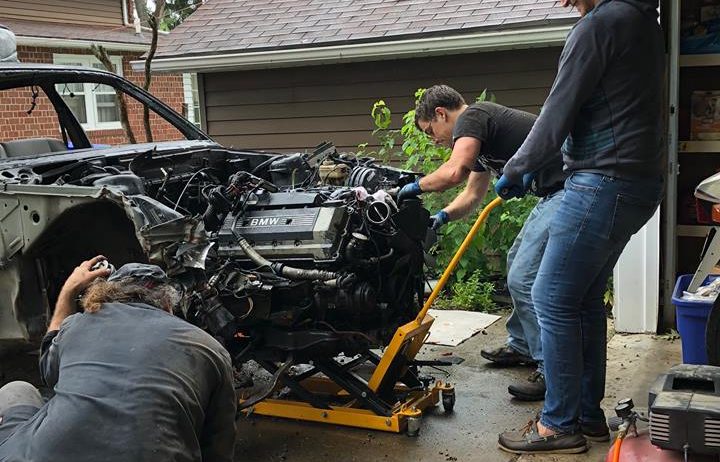In the last installment of Project E34, I acquired a parts car in order to obtain all of the necessary parts for my manual transmission swap. As I began tearing into the car, I discovered several other goodies that I’d find useful for my project, and some good sheetmetal I could cut out and reuse for rust repair on my wagon.
The parts that I needed, along with the parts that were damaged in the collision, made up a comparatively small proportion of what was there. Simply put, this E34 was chock full of good stuff – stuff that I could sell and recoup some of my investment.
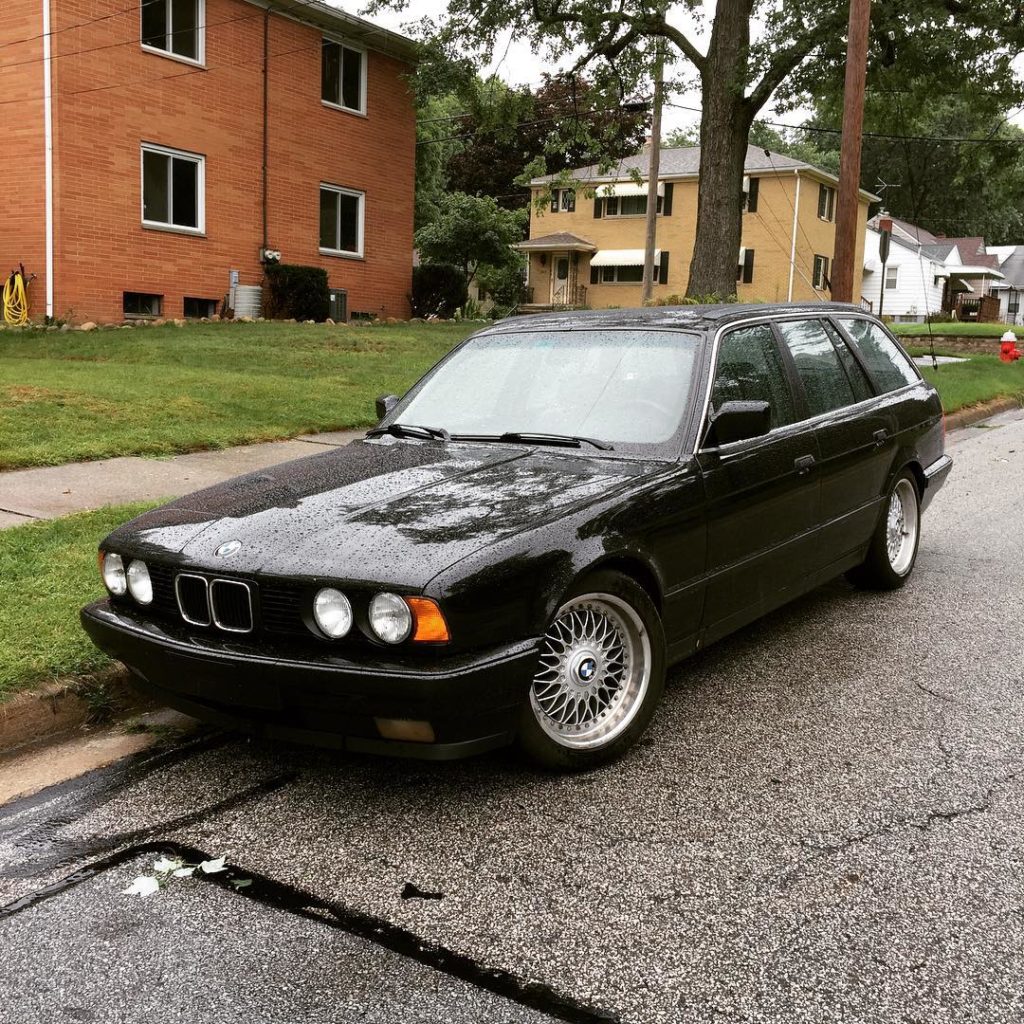
Working like locusts over the course of several weekends, the car was stripped to a bare hulk. The front end sheetmetal was removed, with the structure cut off just aft of the crumpled core support to facilitate removal of the engine, transmission, and front subframe as one unit.
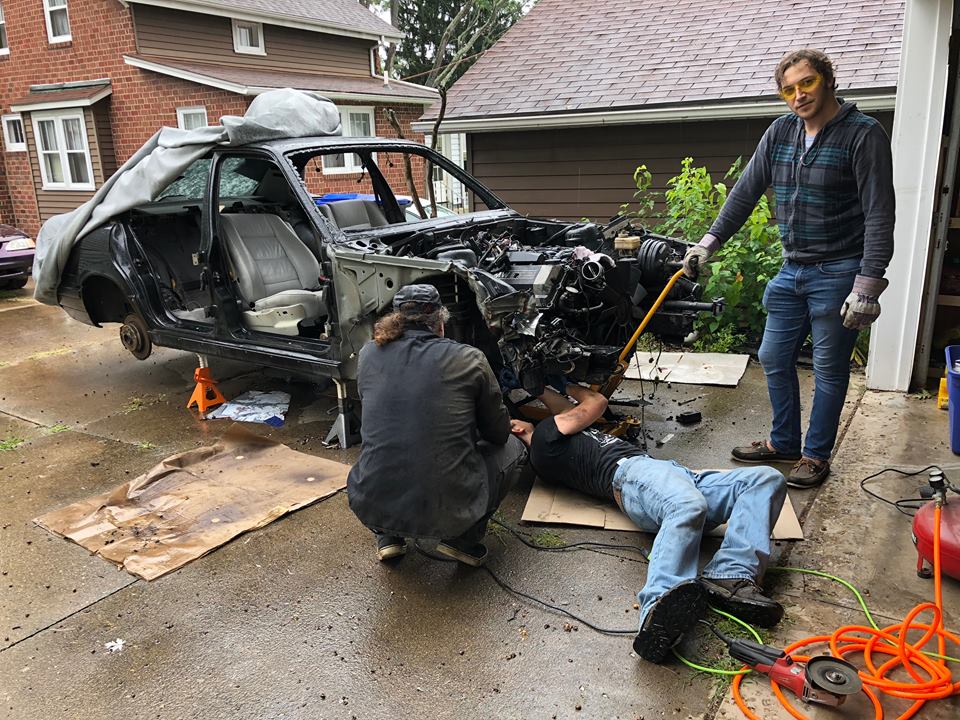
Oddly enough, the last parts to be removed were the parts I actually planned on keeping for myself. By selling off various trim parts, electrical components, and the wheels, I was able to recoup a fair amount of my investment. Scrapping the catalytic converters brought me even closer, and scrapping the shell itself will likely bring me to the break-even point. The best part (and worst part) is that one bay of my two-car garage is filled with either parts I’m saving or parts I plan to sell.
My friend Tony from Illinois (who completed the same swap on his 525iT a few years back) visited for a weekend to help. We removed the necessary clutch hydraulics and pedal box components before making preparations for removing the front subframe. First, the belly pan was removed, then a motorcycle lift was placed underneath for support as we removed the subframe bolts and the transmission crossmember.
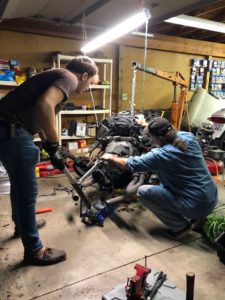
With the subframe now free, the motorcycle lift was gently lowered, with Tony helping out with a floor jack on the transmission tailshaft for balance. Carefully, we began pulling the assembly forward, out of the car, disconnecting any errant wires or plumbing along the way with the aid of a garden lopper (we were careful to preserve the DME wiring for the engine).
With the subframe mostly clear of the car, we used ratchet straps to hold it to the motorcycle lift before finally divorcing it from the crumpled shell once and for all. We then used an engine hoist to support the engine from the top.
Although I’m not planning on using the engine in my car, I do intend to keep it around for a future project or for eventual resale. To mount it on an engine stand, I’d need to remove the headers, front suspension and brakes, and the exhaust aft of the headers. Out of the car, we were able to asses the condition of the parts before disassembly.
The engine will need new valve cover gaskets and plugs, and a replacement for the cracked driver’s side valve cover. The clutch hydraulics and struts were relatively new, just as the previous owner said, and the clutch disc and pressure plate looked to be in good shape. The dual mass flywheel, though, showed plenty of wear, so it will all be replaced or reconditioned.

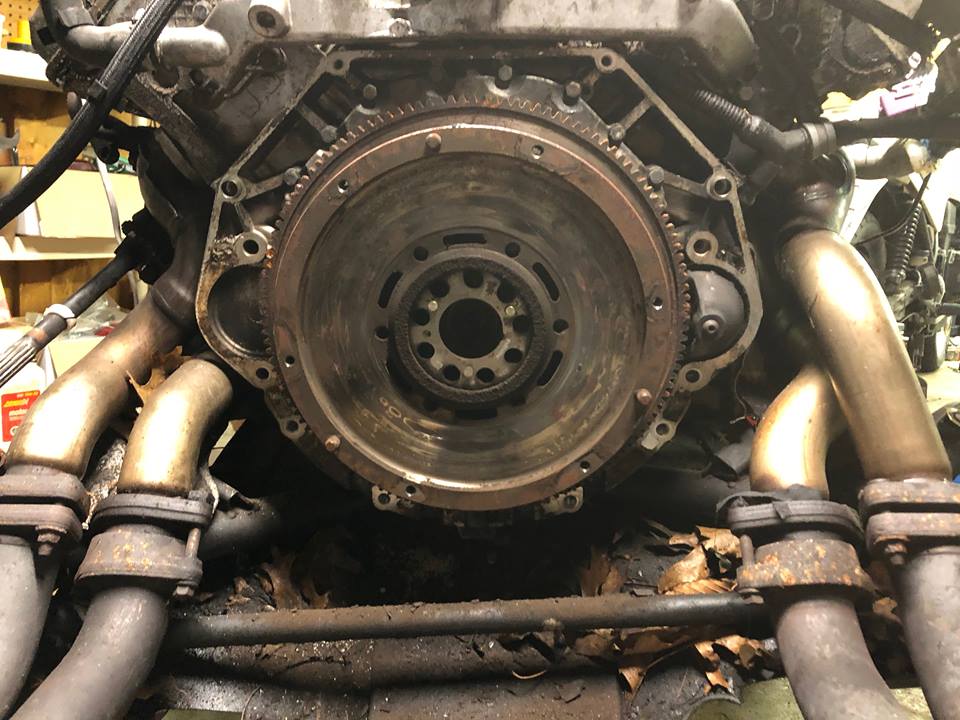
Out back, the rear subframe will be disassembled, allowing for powdercoating, bushing replacement, and a change of differential fluid, as well as a rebuilt rear suspension and upgraded rear brakes utilizing the E34 540i’s vented rear rotors. Lastly, the driveshaft will be sent out to be rebuilt, and I’ll purchase a new giubo and center support bearing.
On the body side, the lower inner fender on the driver’s side will be used to patch the rust on my car, and serve as a template for a patch panel on the passenger side. I’ll have to remove the carpet to cut and weld the new section in, so the interior will receive a thorough cleaning, and the all-important manual shifter trim will be upholstered in leather before installation. This will also give me a chance to retrofit the BMW alarm system with central locking that I pulled from the parts car.
Three of the four doors were in great shape. The passenger side front door will be repainted along with the rest of the car; I’d already acquired wagon-specific rear doors last year, as well as some new sheetmetal for the rockers and lower rear doglegs from Europe. Next month, I’ll begin to tackle bodywork as I recondition the rear subframe.
Now, a question for you, dear readers: I plan on going with all rubber rear suspension bushings for comfort, but I’m considering polyurethane rear subframe mounts. What are your thoughts? Let me know below—and keep checking BimmerLife for the latest updates! —Cam VanDerHorst

